Celebrating Dune 2000, Westwood's forgotten RTS
When Dune 2 is just too old to enjoy, there's this ill-fated remake.
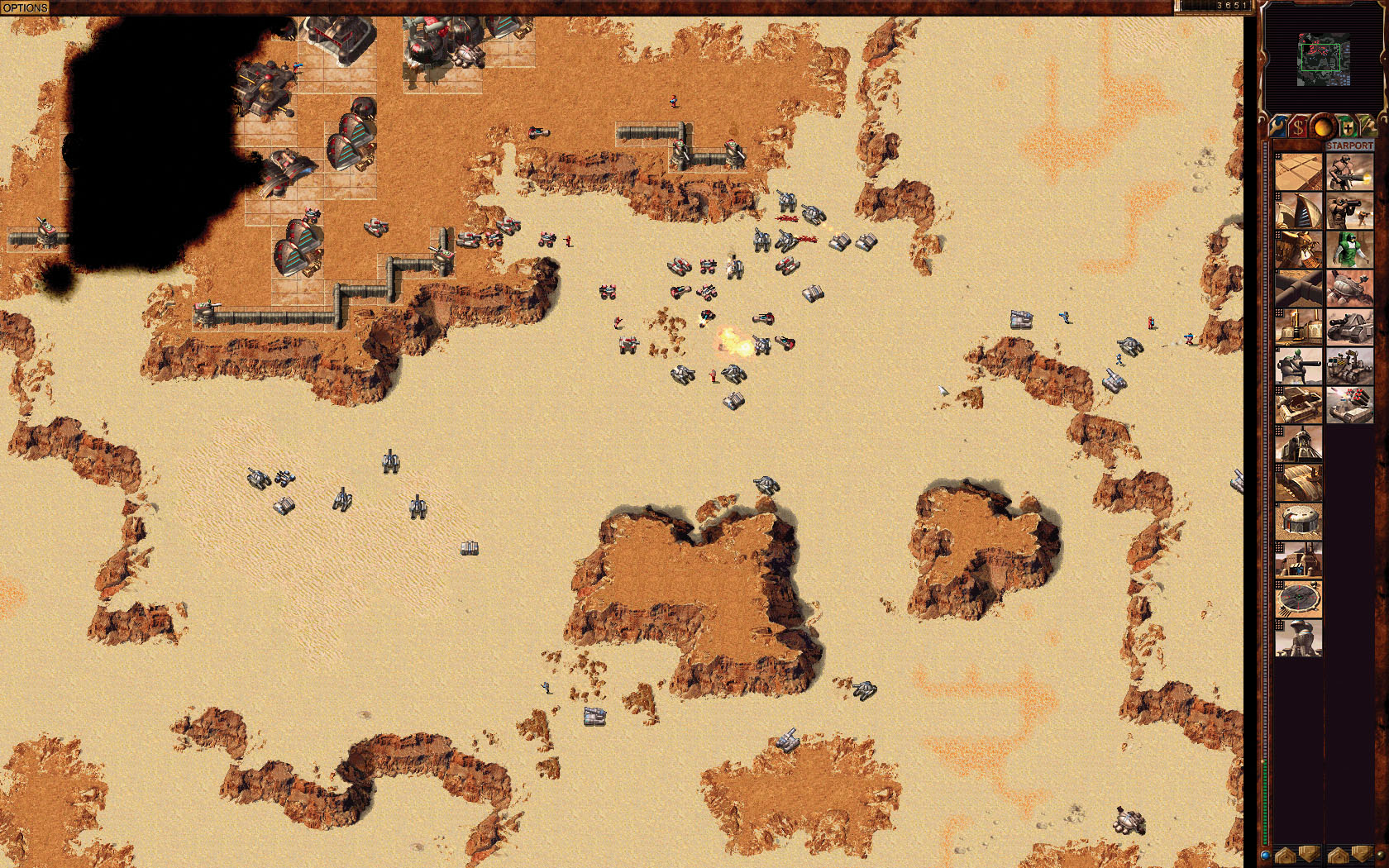
Imagine a universe where Patrick Stewart charges into battle holding a pug and firing sound at people, where Sting plays a ginger psycho lubed up with baby oil, and where Freddie Jones is forced at syringe- point to suckle milk from a cat—all whilst under the watchful eye of a gigantic spice-puffing space vagina.
I am of course talking about David Lynch’s 1984 film, Dune, the adaptation for the big screen of Frank Herbert’s epic sci-fi novel.
Dune is an intriguing and complex story about time and space, bravery and betrayal, and ultimately about one young man’s destiny to unite a universe. Set in the year 10191, the story sees two great houses battling for control of the desolate sand planet Arrakis. The planet’s mysterious spice is harvested to fund war, giant tank-eating worms roam its surface and its indigenous Fremen warriors hold a great secret.
The Dune universe first came to PC in Cryo’s modest 1992 adventure game, however it’s undoubtedly Westwood Studios’ 1993 masterpiece, Dune II, for which the universe is best remembered on PC. Dune II: Battle for Arrakis, or Dune II: Building of a Dynasty as it was known in North America, played a pivotal role in the formation of real time strategy as a genre, and laid solid foundations for the beloved Command & Conquer that came a year later.
Then, in 1998, and in the shadow of both Command & Conquer and Red Alert, Westwood and Intelligent Games released the now largely forgotten Dune 2000.
At the time it scored poorly, and rightly so in the context of how much the genre had developed by that point. It lacked the production values that we’d seen in Red Alert and had almost taken backward steps in harnessing the concept of unit balance. Dune 2000 was simply Dune II in Command & Conquer’s engine. For that reason, I never played Dune 2000 at release, and Tiberian Sun came out just 12 months later.
Sands of time
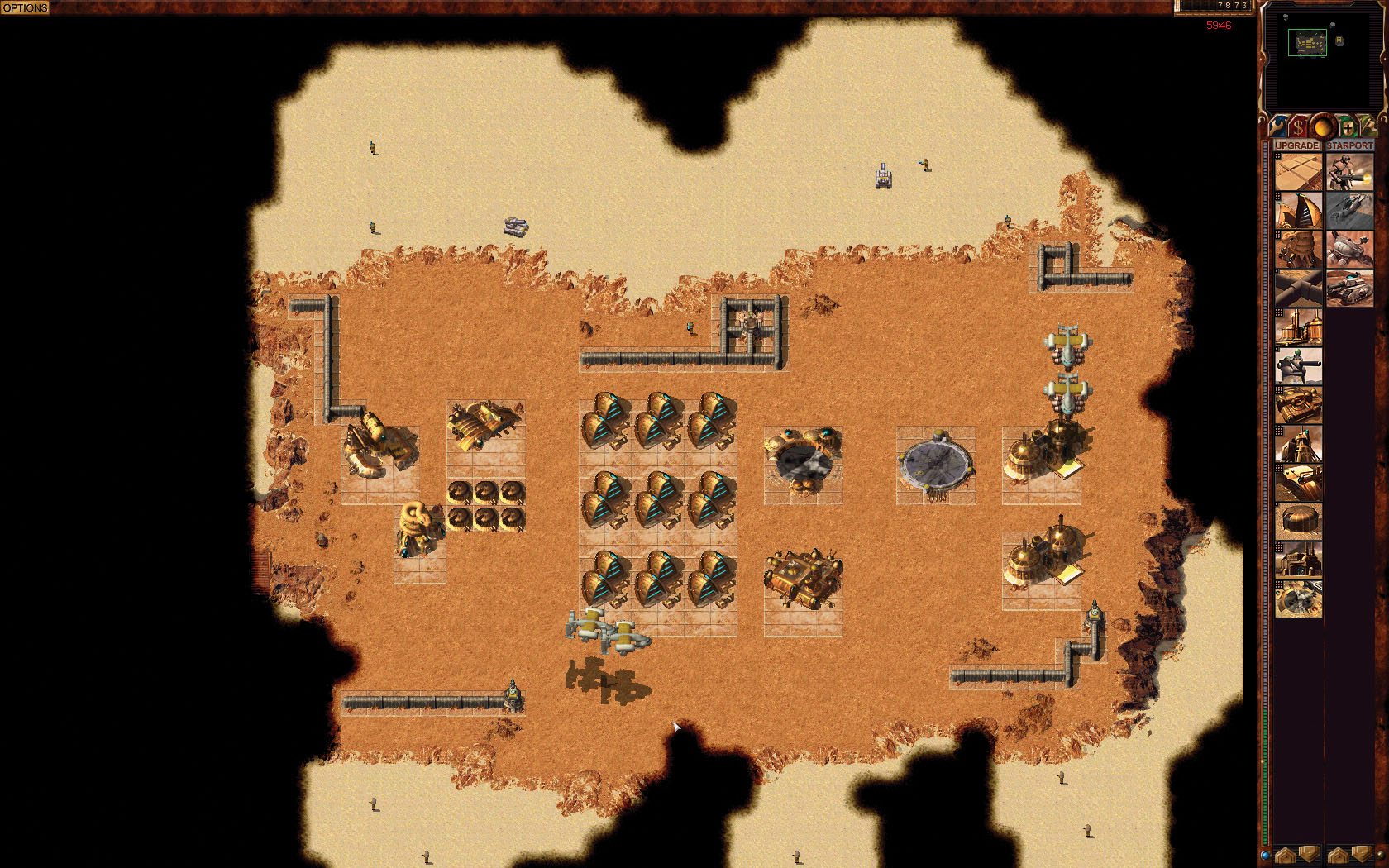
So why is Dune 2000 worth playing today? Let’s find out.
The biggest gaming news, reviews and hardware deals
Keep up to date with the most important stories and the best deals, as picked by the PC Gamer team.
I recently watched the movie again, which got me thinking I’d love to delve back into Dune’s strange universe and perhaps replay Dune II. Sadly, after viewing a couple of YouTube videos I was instantly put off. I’d forgotten how laborious the mechanics must have been—having to select each unit individually and manually select ‘move’ or ‘attack’. How was it going to look on a 4K monitor? Would I be better off trying to play it on a calculator? Would I really get any satisfaction out of finishing a mission without a badly acted FMV sequence at the end? Could I even be arsed to try and get a 25-year-old game to work on a modern PC?
Dune 2000 was the solution. Back in 1998 Dune 2000 was little more than a revamp of Dune II, but to be able to easily revisit that universe today that’s exactly what I needed.
While Dune 2000 isn’t available through digital stores, you can download and play it for free courtesy of the legally murky Dune 2000: Gruntmods Edition. Gruntmods has done a fantastic job of making it easy to set up. It’s available to play in just moments, and at about four times its original resolution.
Craft beard
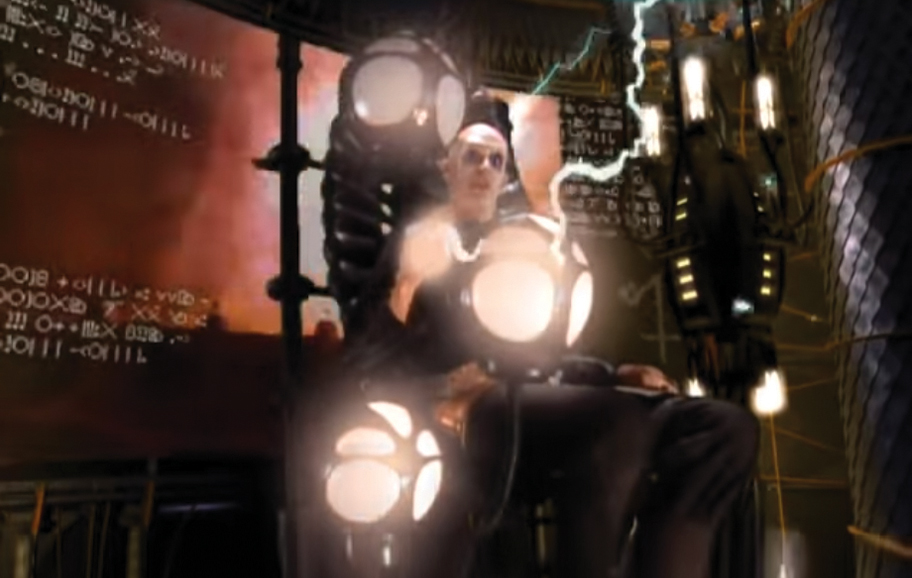
The icing on the cake is it still includes all three sets of ludicrous full motion video sequences from each of the playable houses.
The game begins with an introduction to the story by Bene Gesserit concubine Lady Elara—basically a bald witch with a detachable poisonous fingernail.
I’m drawn to play as house Atreides, not because they’re noble heroes who liberate the oppressed natives, but because I want to see John Rhys-Davies’ beard. Playing the role of mentat to house Atreides, he delivers a brilliant piece of oratory during one of the early FMV sequences, proclaiming that “Harkonnen would rather drink your blood than their own mother’s milk”. It’s classic Command & Conquer movie territory, complete with a tiny set, about three extras and a terrible green screened desert backdrop.
As the game begins the first thing I notice is that the unit animations aren’t quite as polished as C&C, and there are fewer frames when the units move. It’s playable though. My screen resolution for the first mission is so high that I find the corners of the map with a couple of infantry then realise the mission area is basically just a box in the middle of the screen.
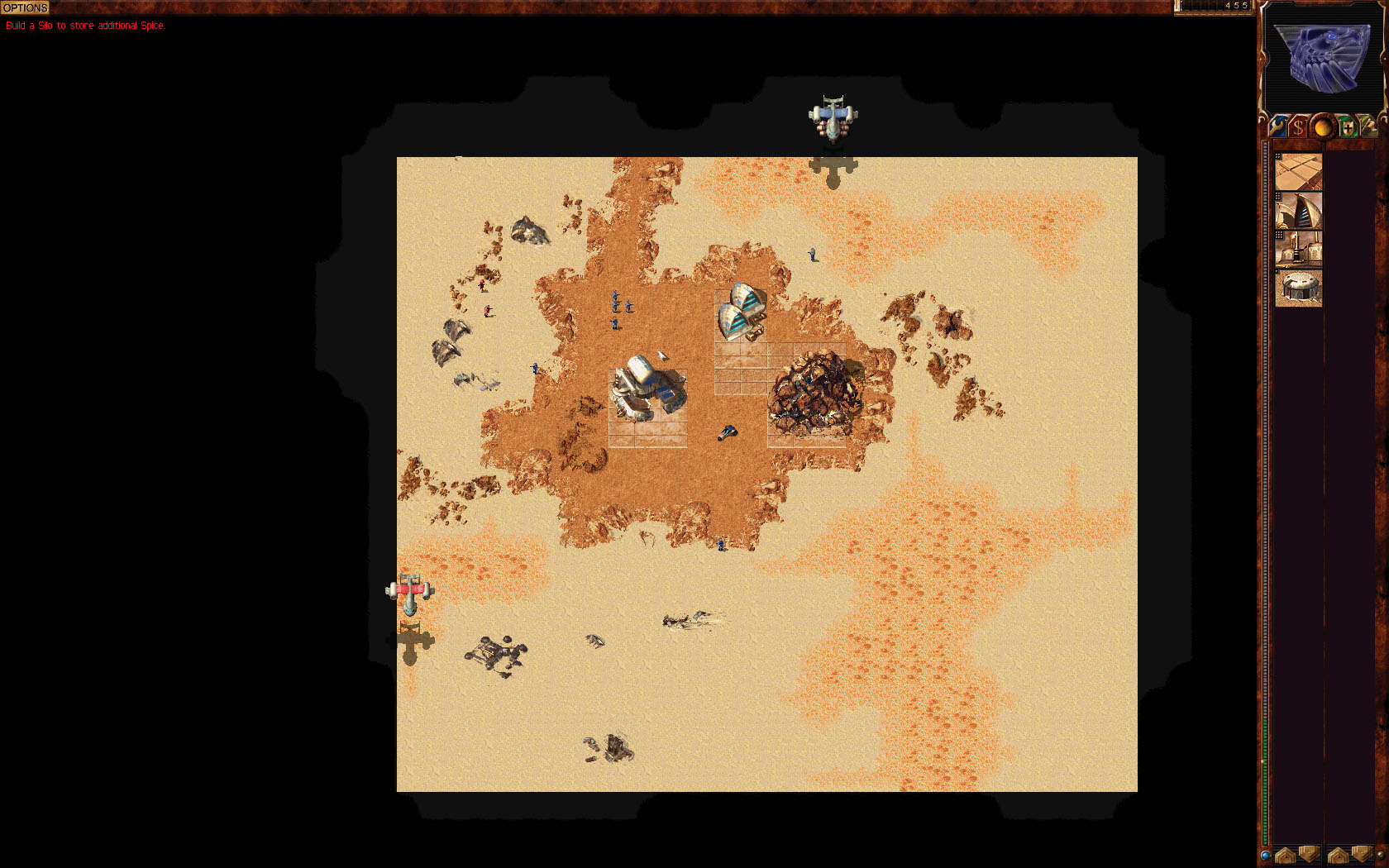
I notice early on that many of the vehicles such as harvesters and trikes take a form much more akin to the movie than in Dune II, and that’s also true in the FMV sequences. In terms of mechanics, it’s pretty much identical to the original Command & Conquer. You can select and move multiple groups of vehicles and assign numerical shortcuts to groups. Sadly there’s no way to queue unit production as in Tiberian Sun, but once the tech tree lets you build a Starport you can receive dozens of units at a time, making this real tank-rush territory. Unlike anything in early Command & Conquer, the Starport works almost like a marketplace, where stock runs dry and where prices fluctuate.
Much like Dune II, there’s a third house called Ordos, derived from the book’s Spacing Guild, in addition to the Atreides and Harkonnen. Dune 2000 also introduces smugglers and mercenaries, some of which you’re allied with and who will abandon you mid-mission if they become overrun. The native Fremen warriors make a return too, living in caves amongst the rocky outcrops and ambushing enemies out of the blue. Finally of course is the Emperor and his ruthless Sardukar warriors. They’re really just the same as your chaps but dressed in purple beekeeper outfits for added drama.
Much like Dune II and even Command & Conquer, around the fourth mission you’ll find your base strewn with your own badly damaged light vehicles—simply because it’s the last mission before you’re allowed to build a repair bay. All you can do is build more.
Playing through the game on ‘hard’ actually gets quite tough by the fourth or fifth mission. You’re often fighting against more than one house, plus mercenaries or Fremen. Enemy AI unforgivably fling wave upon wave of mixed unit attacks meaning that you need a good range of anti-infantry and anti-tank defence.
Tanks alot
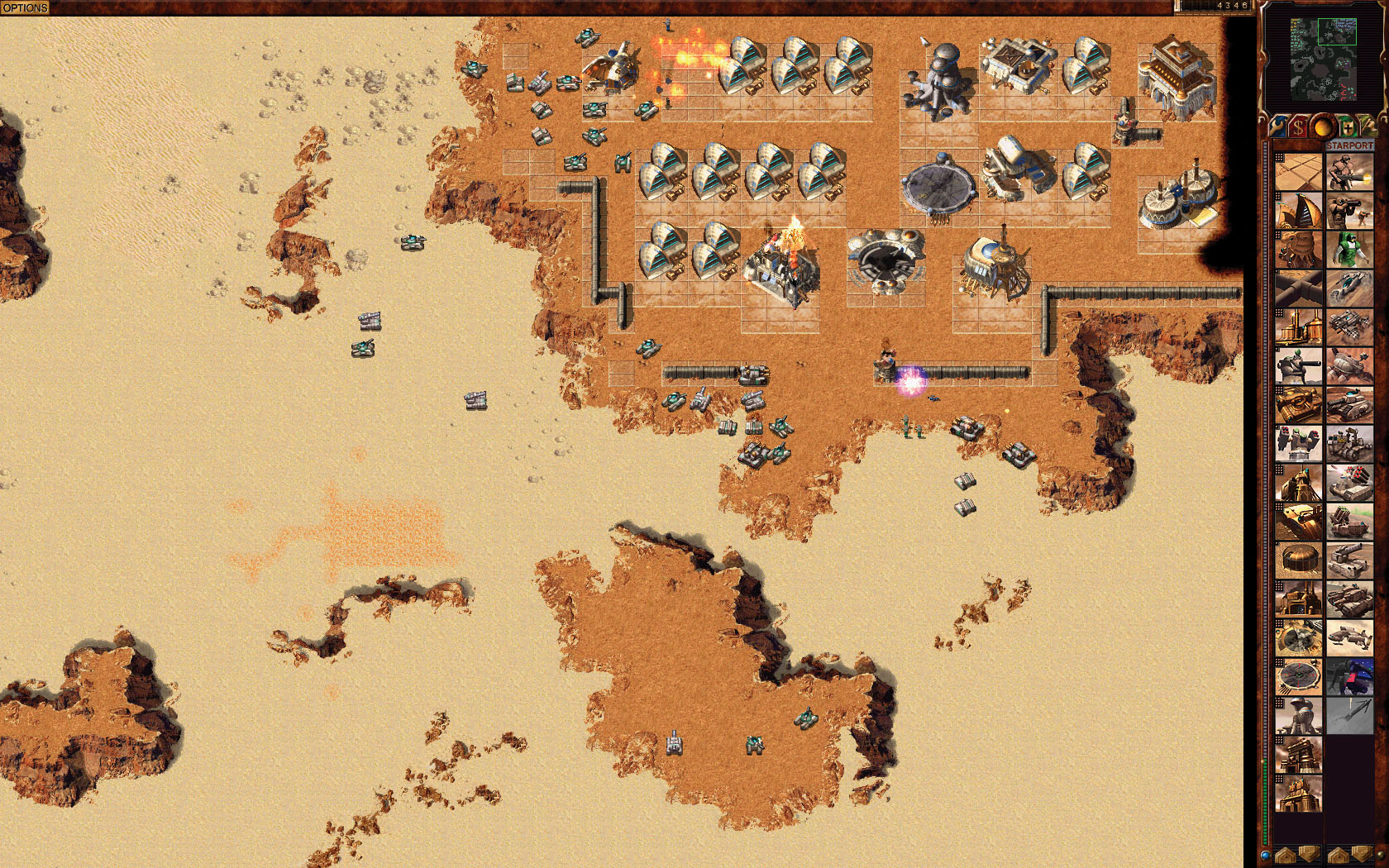
Each house has one specialist unit that becomes available in the later missions and each unit either reflects its house or the original story. There’s a definite ‘holy shit’ moment the first time I see the brutal Harkonnen’s Devastator tank rumbling towards my base. It’s like C&C’s Mammoth tank only bigger, and takes a battering before it’s finally destroyed.
House Ordos are the underhand sneaks, and their Deviator tank is based on illegal Ixian technology. It fires shells filled with mind-altering gas that temporarily changes any affected unit’s allegiance, much like Yuri’s nonsense in Red Alert 2.
Playing as house Atreides means I can build their unique unit now too—the Sonic Tank. In the spirit of the book, the Sonic Tank projects sound at enemy units devastating effect. In a later mission I suffer a complete Sonic Tank fail whilst playing as house Atreides. Remembering what I’ve learnt up until this point, I make sure I’ve got a good variety of vehicles to counter- act whatever the enemy AI might pull out of the bag. They include half a dozen Sonic Tanks.
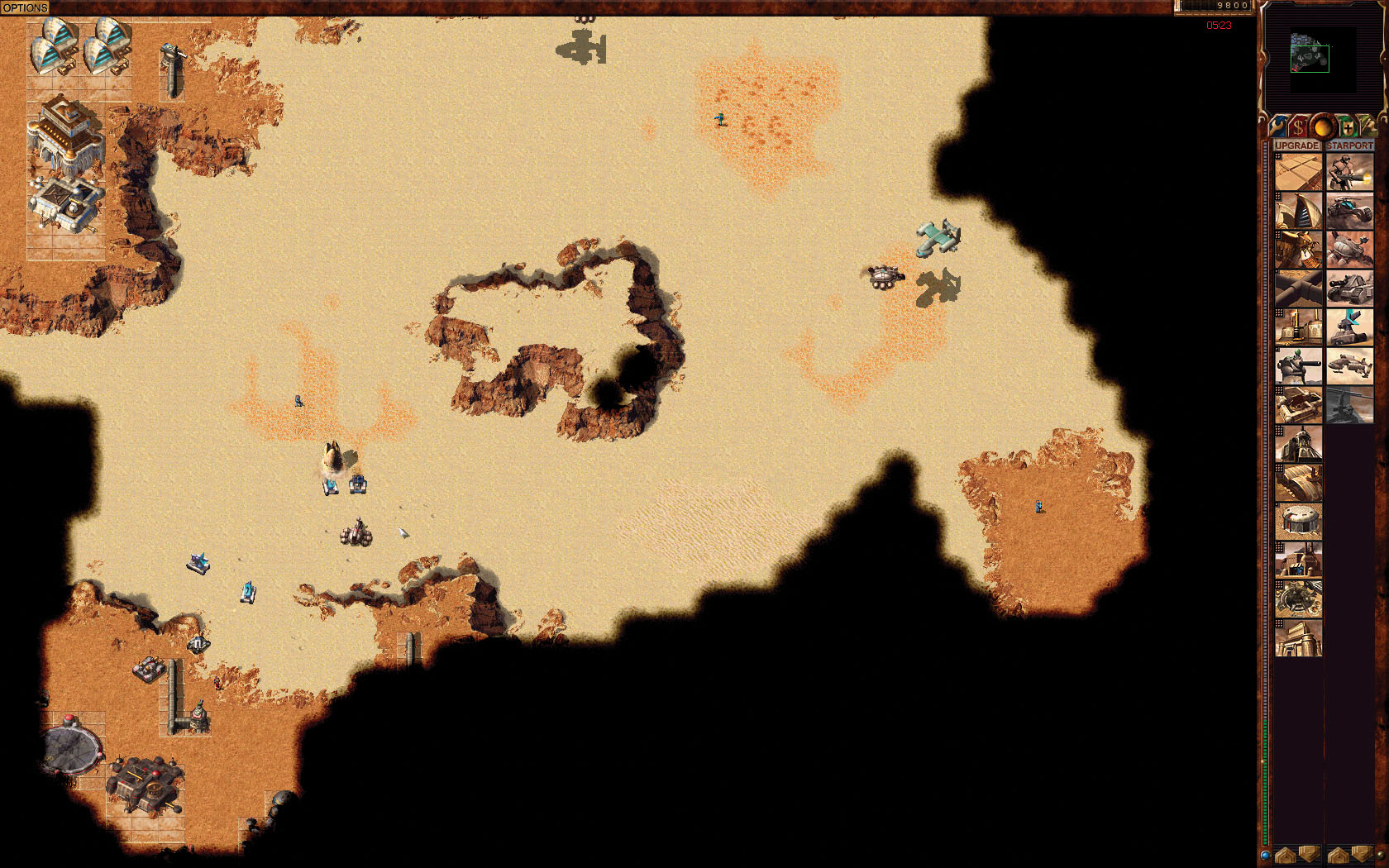
As my units move into position I realise that the Sonic Tanks must have been the inspiration for Tiberian Sun’s Disrupter Tanks as they’re both heavily armoured and channel powerful energy at their targets.
It’s with some regret then that I realise too late they share exactly the same flaw. Within moments my Sonic Tanks are firing waves of sound at the attacking Ordos, and any of my other vehicles between them are having concentrated sound waves fired up their asses. Friendly fire and foul language ensue, and I’m forced to pull back for repairs.
Some of Dune 2000’s maps are gigantic, and the last missions in particular can take hours to complete. There’s plenty of gaming time to be had here, with nine missions to complete as each of the three houses. Though there’s a lack of diversity in the arsenal, expect some of the biggest open-field tank battles of any of the early Command & Conquer games, including Red Alert.
Worm holes
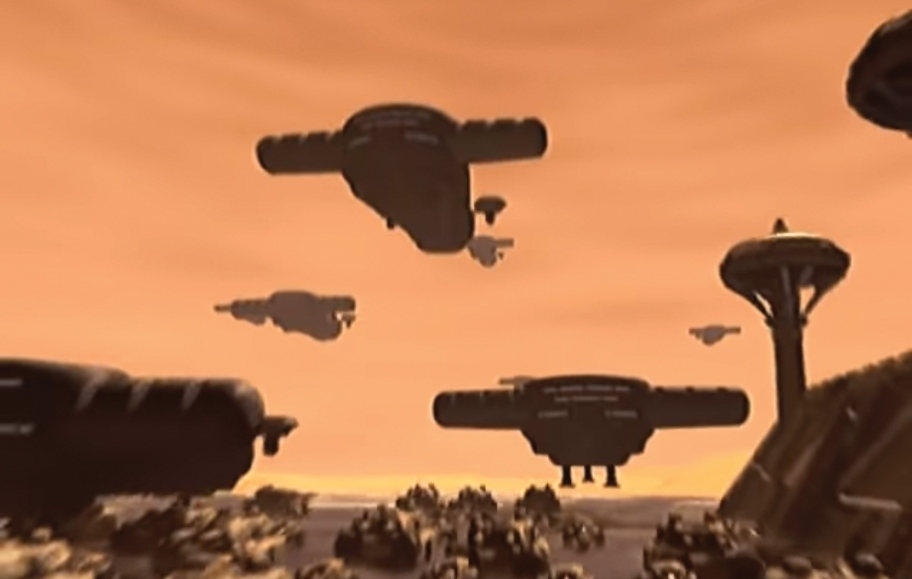
Sadly the game has one quite specific issue—it’s missing any form of stationary anti-infantry turret. It does however encourage you to be pro-active in how you defend rather than just building turrets and leaving them to do the business. One of the best ways is to just charge over and squash enemy infantry with tanks, and then counter-attack any remaining units from behind. It isn’t a strategy the AI pick up on for their own defence of course, so the lack of anti-infantry turrets is a huge exploit when attacking.
As part of C&C’s legacy, Dune 2000 massively benefits from having cliff formations and bridges on its maps which really help make each mission more interesting. Random enemy carryall drops in obscure corners of the map, Ornithopter bombing raids, and of course the tank-eating sandworms all keep you on your toes. However, don’t expect any missions to kick off with 20 minutes guiding a tobacco-spitting commando around destroying SAM sites—they’re all pretty much ‘build a base then level everything else’.
Dune 2000’s biggest shortfall in 1998 is still prevalent today, and it’s the lack of a diverse unit balance system. Other than one specialist vehicle per house, all three sets of units are almost identical. You can still capture enemy technology and use the enemies’ own vehicles against them, but at its heart Dune 2000 is about something much simpler.
At its core Dune 2000 is a bread and butter RTS—for me that means building a base, harvesting resources, clearing off the fog of war, a bit of cunning tank management and the obliteration of everything in sight.
If Dune II was before your time and you’ve always wondered what all the fuss was about, or if you’re just a fan of the movie and its universe, Dune 2000 is well worth a gander.

